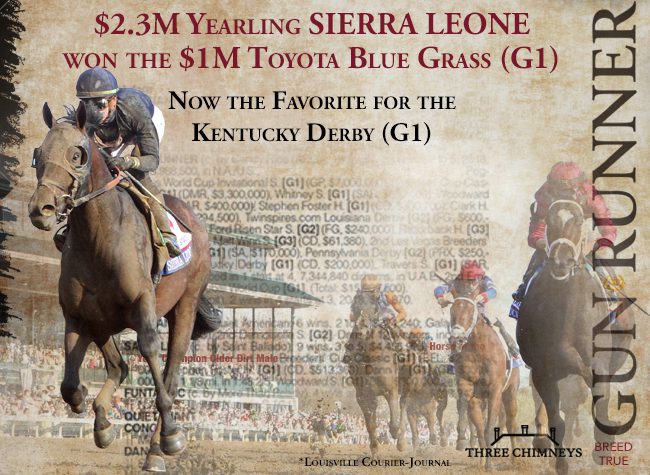By Len Green
Additional reporting from Jack Canaley
Some will label the recent IRS Case Skolnick v. Commissioner as a win for the government since the court disallowed the deductibility of the losses and classified the operation as a hobby. However, we examined the case in great detail and learned some very valuable lessons that will benefit people in the horse business.
The recent ruling, which ultimately was upheld upon appeal by the Third Circuit, provided some clarity and insight into the factors considered in determining the deductibility of losses generated by a horse operation. Given the increased scrutiny by the IRS that appears to be on the horizon for small businesses, it's important to understand the factors the court considered and the ways to best protect yourself and your business from future audit risk. It's clear in not only the case mentioned above, but consistently in cases of this nature, that the first hurdle in the eyes of regulators is whether you are actually operating a “business”.
Over the years there have been many interpretations of that definition.
In the equine industry the most common cited hobby or business rule is to ensure two out of every seven years produce operating income. Anyone familiar with the horse business knows there are almost certainly going to be lean years, often coupled together and, therefore, meeting this two out of seven-year requirement could be a challenge.
Upon more careful review, however, you learn that this profitability test is only one of the nine tests that you will have the opportunity to pass to prove you are operating your horse operation as “a true business”.
Fact Pattern of the Skolnick v Commissioner Case
This brings us back to the decision rendered in the Skolnick v. Commissioner case, in which the court disallowed several years of losses related to the operation of Bluestone Farm, a standardbred (harness racing) horse breeding operation. Let's take a deeper dive into the way that Bluestone Farm operated and, most importantly, some of the business decisions and activities that led to the negative court ruling.
Bluestone Farm was owned and operated by Mitchel Skolnick, along with an associate Eric Freeman, who was a retired insurance and stockbroker who had a love for horses. Skolnick's father operated a standardbred breeding business that he worked for growing up, ultimately managing the farm. It's important to note that Skolnick's career prior to the farm was running a very successful IT consulting firm. After a falling out with his father, Skolnick decided to start his own venture, Bluestone, with the help of Freeman.
In 1998, Skolnick and Freeman set out as equal partners, developed a business plan and purchased a 60-acre farm in New Jersey for roughly $560,000 They hired a full-time manager to run the farm, as both spent significant time out of state during this time. Over the next few years, they made major improvements to the property, including cleareing trees and barn and paddock construction.
By 2002, with the business yet to turn a profit, they decided they needed an influx of cash, and brought in a third equity partner. Skolnick transferred 15 percent of his ownership for $325,000, which included plans to expand the business, which a nearby 30-acre farm purcghased for $850,000. The new location was renovated in similar fashion to their first location.
Late in 2003 Skolnick l left the IT world for a second time to focus on the horse breeding business, coinciding with trust fund distributions he began receiving from his parents for the next several years to the tune of $10 million.
What were the “key points” the court outlined with reaching its decision this was a hobby?
Whether a relevant business plan or business strategy was in effect and did the taxpayer follow it
- The manner in which the taxpayer operates an activity, pursuit of profitability
- The expertise of the taxpayer or their advisors in the industry
- The amount of time and effort spent on the activity
- The reasonable expectation of the assets used in the activity appreciating in value
- The success of other businesses, both similar and dissimilar, the taxpayer operates
- The history of income and losses of the activity, including occasional profits
- The financial status of the taxpayer
- The elements of personal pleasure or recreation
While there is no mention of the history of income and losses, the court never alludes to the two out of seven-year income rule. In theory you can lose money for the next 20 years, which can be fully deductible if you're genuinely operating a business focused on generating a profit.
So, what should Skolnick and you do differently? And if he had done things differently and you do as well, are your chances of withstanding IRS scrutiny and defeat greatly enhanced?
Action Steps
- Set up a horse only LLC entity. All expenses and all income should be filtered through this entity.
- No personal expenditures should be paid for by the LLC.
- You should become as educated as possible in the horse business, attend sessions, listen to Podcasts, read the Thoroughbred Daily News and join and attend TOBA seminars.
- Invest in horse partnerships and attend their sessions.
- Ask questions as to how they operate and what goes into their decisions to buy or sell horses.
- Ask questions of the managers, trainers and other people in the industry.
- Hire a tax and accountant advisor who have knowledge of the economics and tax aspects of the horse buyer.
- If you buy a farm, make sure you use it in your operation. The IRS will then take into account any appreciation for the farm value in determining profitability of the horse operation.
- Keep a log of the hours you spend in the horse operation. Include hours involving the above activities, going to sales, watching podcasts, reading horse related papers, going to farms and going to the track when your horses are involved.
- Set up a separate room in your home with a computer, desk and screen to watch races you are involved with so you can deduct home office expenses.
- Take the time to establish and update either a business plan or business strategy with the aim of creating profitability over the short term or long run.
- Continually “PIVOT” and go in different directions if your original plan is not working. Think of diversifying by buying colts or fillies, buy yearlings, 2-year-old or claim horses.
- Go into breeding.
Bottom Line
By following these recommendations, you accomplish two things: You are running your operation in a business-like manner and you should withstand IRS scrutiny. And you have increased your chances to become profitable.
If you have any questions, do not hesitate to write us at TDN.
Not a subscriber? Click here to sign up for the daily PDF or alerts.






